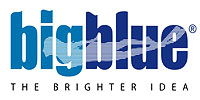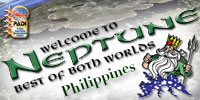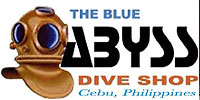- Check the sub-folders for the specimen information files -
ECHINODERMS
- Check the sub-folders for the specimen information files -
SEA STARS - ASTEROIDEA
Sea stars are not fish, but the name "starfish" is used by many people all over the world. They grow five (some more) equal arms radiating from a center area, brittle and basket stars have a body-disc out of which five arms grow. When by any reason one of the arms will get amputated, they just grow a new one. Even a amputated piece of sea star can grow back into a complete sea star. Sea stars are slow but strong animals, they are able to open bivalve mollusk (shell) by holding each part of the shell with their sucking-feet and pull them out of each other. From the moment the shell separates a little bit, the sea star extrudes its stomach into the shell and slowly digests the mollusk. Some species live near coral reefs and are mostly night-active, some bury themselves into sand during the day. There is probably only one sea star which is not popular, the crown of thorns or Acanthaster planci is a coral polyp feeder which is able to eat square meters of coral polyps in some days time. When 50 or more of these animals graze one the same reef for a while, it looks as white as a snowy christmas card. All that will be left behind is nothing else than empty (dead) coral skeletons. Many people freak out when seeing this (I did), but this is nature. In many places around the world the crown of thorns are lifted of the reef and cremated. This is one out of many ways to protect the fragile coral reefs, but such activities should only happen when we talk about a threat!
CRINOIDS - CRINOIDEA
Crinoids are often called feather stars because of the feathery look of the arms. The central body called calyx, is relatively small and contains the mouth, digestive tract and other organs. The crinoids mouth is in the top-part of the body and is surrounded by five or even up to 200 arms. Every arm has two rows of pinnules (mini-arms) growing sideways giving it this feather look. Plankton or other food particles that drifts within the net of the crinoids arms will be hold by the pinnules and than brought direction the mouth. The cirri (stiff short legs) are based on the bottom part of the crinoid and are used to hold themselves on to the substrate, sponge or gorgonian. Some crinoids live a life hidden in crevices with only a few arm-tips exposed to catch food. Most are always exposed and some are even able to swim by coordinated movements of the arms. Like most echinoderms, crinoids provide homes for a number of small animals like shrimp, clingfish or even a small sea star. They probably take advantage of the amount of food their host catches in the current. Some are only night-active.
SEA CUCUMBERS - HOLOTHUROIDEA
These long and slow moving creatures can be found in shallow and deeper waters. Most tropical-water sea cucumbers live on or under sandy bottoms, where they remove detritus from the sand as they pass it through their bodies. Some small sea cucumbers have five feeding arms which they use to catch plankton and brush the substrate for food. Sometimes people think that the opening in the body is the sea cucumbers mouth, which is far from true of course. The mouth is positioned on the bottom part of the side which does not have a hole! Although they're echinoderms, sea cucumbers don't have a spiny skin, neither a skeleton. Some of them do have fake spines on their bodies. Some sea cucumbers discharge internal organs out of the anus when being disturbed, this way the predator will have enough with the organs and leave the animal itself alone. Other sea cucumbers have a defense mechanism called Cuvier's tubules, these white (sometimes poisonous) sticky tubes will be discharged out of its anus when being harassed. These moving thick and sticky noodles probably discourages predators and can even entangle small animals. Sea cucumbers transport themselves by three double rows of sucking feet. Some genus of sea cucumbers are very known to be hosts for different kind of (Periclimenes) shrimp, small crabs, worms and parasites.
SEA URCHINS - ECHINOIDEA
Sea urchins come in different shapes, from ball to flat disc-shapes. They have calcareous skeletons which have around ten double layered plates on the inside to make the skeleton stronger. The spines are attached to the skeleton with ball-and-socket joints, thats why they are able to let their spines point different directions. Every genus has different spines, some have just a few but thick spines while others have numerous and very fine spines. Some species have two different kind of spines, a kind they use to walk on and others pure for protecting themselves from predators. Some species even have poisonous spines which can cause a severe burning pain and nausea when stung. A "regular" sea urchin is radially symmetrical and has the mouth on the underside and the anus on top. The mouth has five pointy teeth which can be completely protruded from the skeleton or retracted inside, these teeth are used for scraping algae of the substrate. The "irregular" urchins like heart urchins or sand dollars are bilaterally symmetrical and have underslung mouths. From the moment they move forward, sand is plowed right into their mouth. They digest the edible matter and pass the rest. These urchins are easy to recognize by the star pattern they have on their back. Sea urchins will never have problems for finding food, but have to watch out not to be eaten. Some wrasse, triggerfish, flounder, mollusks and man are not afraid to eat the insides of a spiny urchin or sand dollar. Most irregular urchins spend daylight hours beneath the sand and come out to feed as night arrives. Without their spines sea urchins could have never survived time, and you would not be able to hurt yourselves by stepping on them. Many long-spined sea urchins live together with their guest(s) who seek protection between the spines. It is not really known if these fish or shrimps use the urchin solitary for transport and food source or maybe help the urchin with cleaning itself from food rests or parasites.
- Check the sub-folders for the specimen information files -









